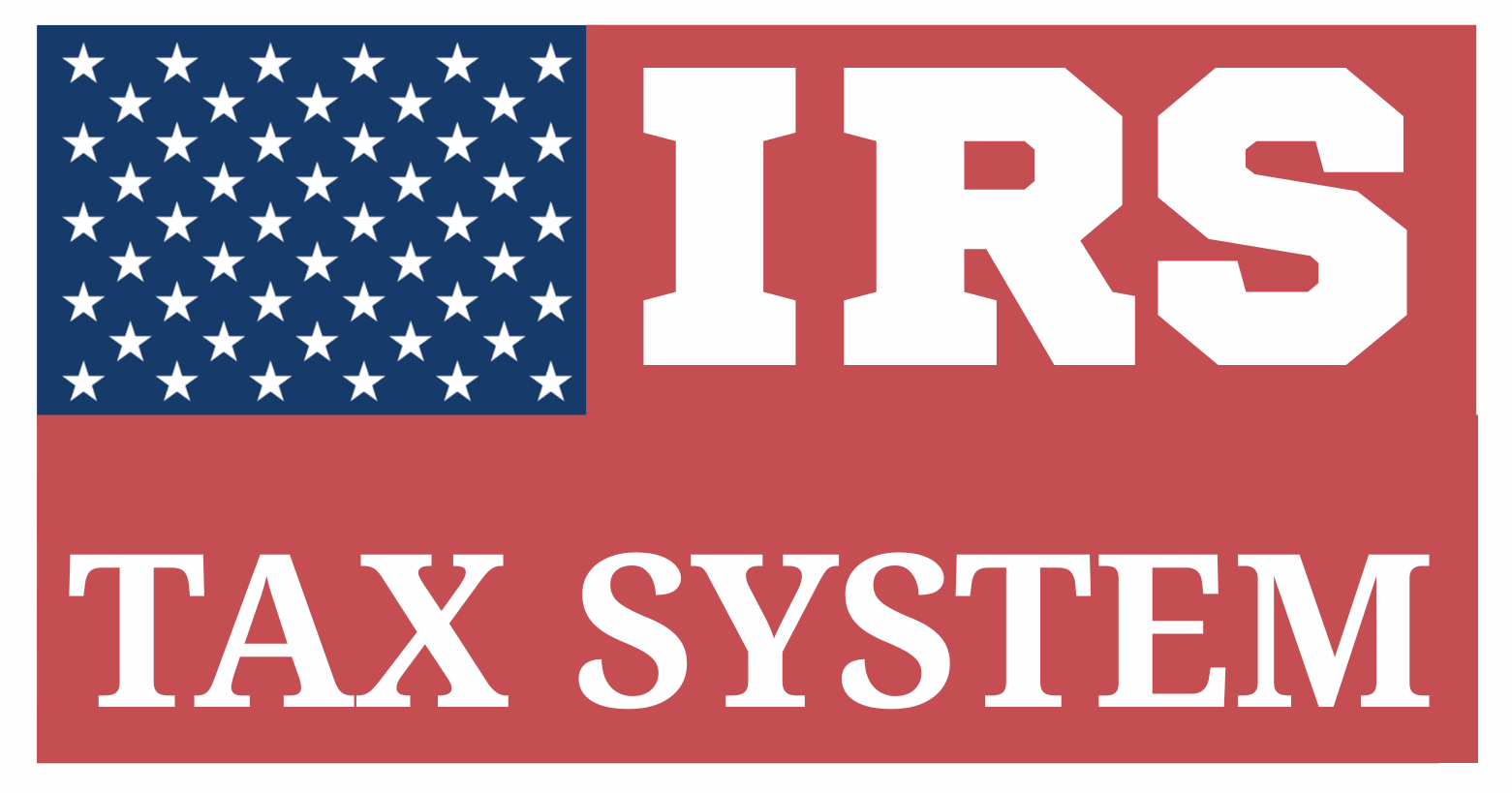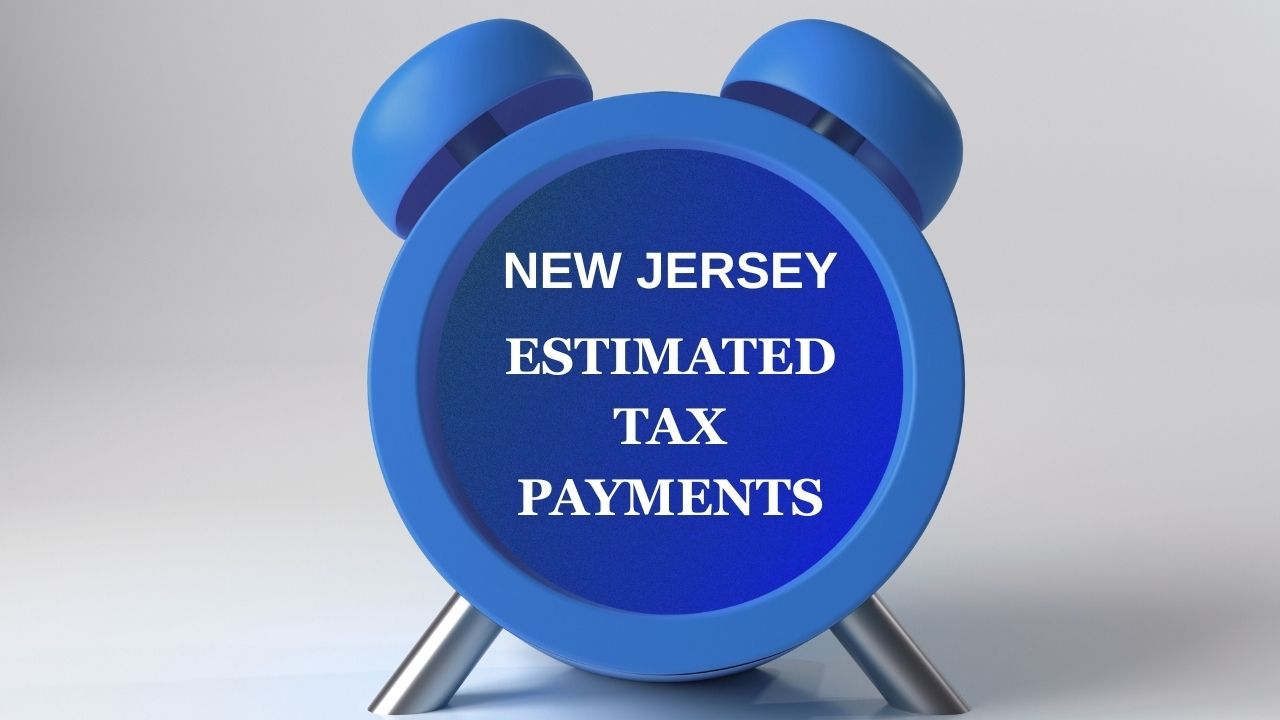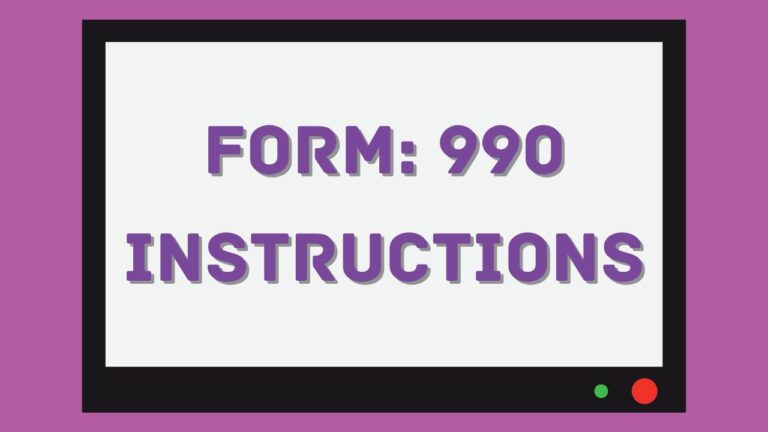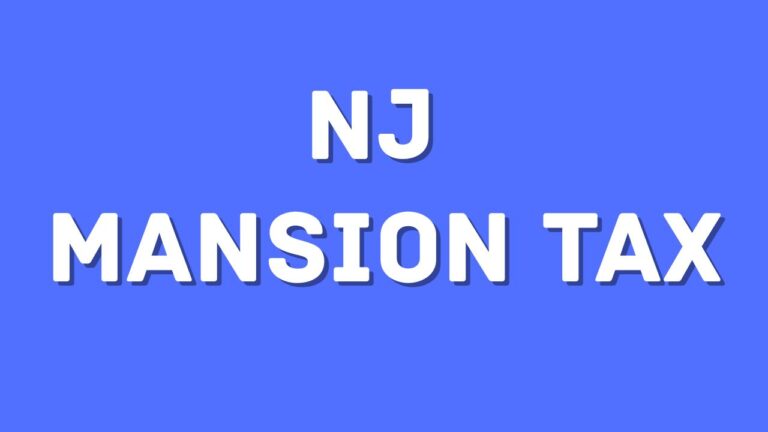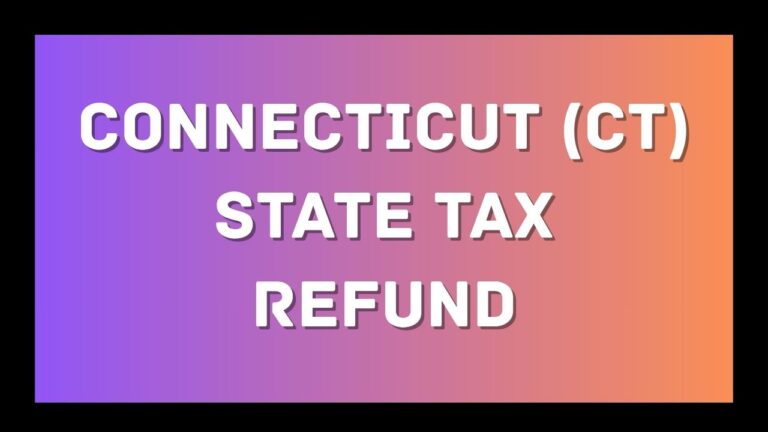NJ Estimated Tax Payments: Quick-Start To The Right Guide
Table of Contents
New Jersey (NJ) Estimated Tax Payments
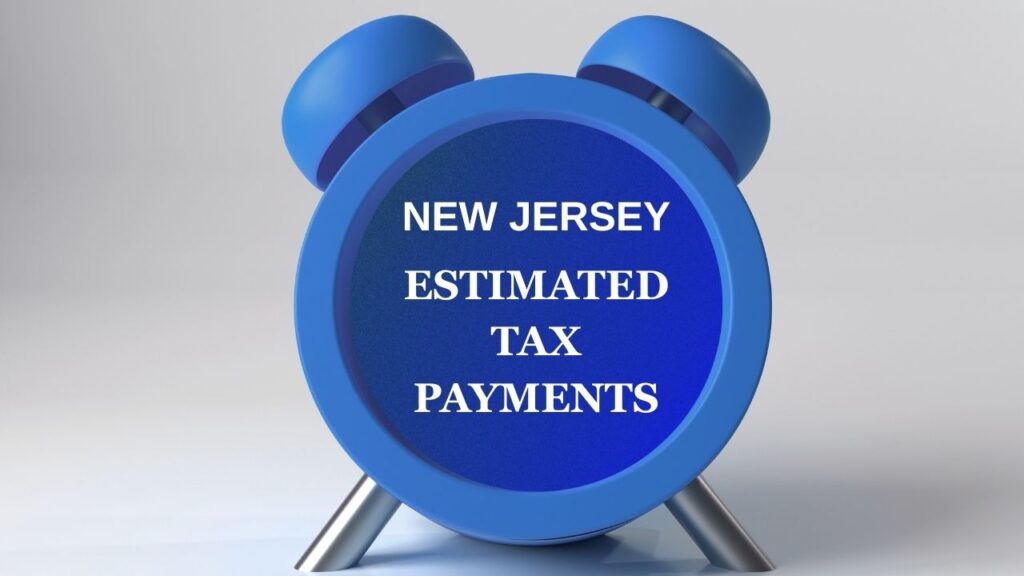
NJ Estimated tax payments in New Jersey are advance payments made toward your annual state income tax liability. They are especially important for individuals and businesses that do not have sufficient tax withheld from their income throughout the year. Whether you’re a freelancer, landlord, investor, or the owner of a corporation or pass-through entity, making accurate and timely estimated tax payments ensures that you remain compliant with New Jersey tax law and avoid penalties.
This comprehensive guide explains who needs to pay, how to calculate, when to pay, and how to make these payments correctly.
Who Must Make Estimated Tax Payments in New Jersey?
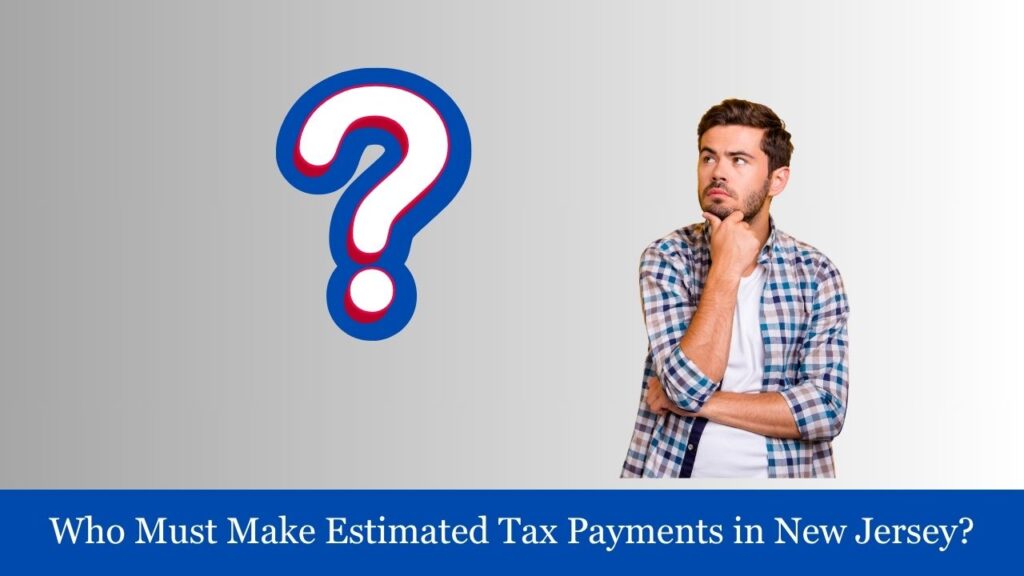
In New Jersey, not all taxpayers are required to make estimated tax payments—but for many individuals and businesses, these payments are essential to remain in compliance and avoid underpayment penalties. Estimated tax payments are prepayments toward your expected annual tax liability when sufficient tax is not being withheld automatically (such as through an employer). Whether you’re an individual with untaxed income or a business with ongoing profits, New Jersey tax law sets clear thresholds to determine who must pay.
Individuals Required to Make Estimated Payments
You are required to make estimated Gross Income Tax payments to the New Jersey Division of Taxation if both of the following apply:
- You anticipate having a New Jersey income tax balance over $400 for the year after accounting for all credits and withholdings.:
- State tax withheld by your employer,
- Payments already made to New Jersey,
- And available refundable credits.
- You receive income that is not subject to withholding, such as:
- Self-employment income (freelancers, consultants, sole proprietors)
- Rental income from properties you own
- Unemployment compensation (in certain cases)
- Dividends, interest, and capital gains
- Pension or IRA distributions that have little or no New Jersey tax withheld
- Alimony received (if taxable under NJ law)
- Gambling winnings or lottery prizes
- Income from partnerships or S corporations
Even if you have a traditional job with W-2 wages, you may still need to make estimated payments if your withholding is too low to cover additional taxable income from other sources.
Businesses Required to Make Estimated Payments
Corporations, S corporations, partnerships, and LLCs conducting business in New Jersey may also be required to make estimated payments under the state’s Corporation Business Tax (CBT) system or its Pass-Through Business Alternative Income Tax (PTE/BAIT) regime.
C Corporations
- Must make quarterly estimated CBT payments if their expected total annual tax liability exceeds $500.
- Applies to both foreign and domestic corporations operating or deriving income from New Jersey sources.
- Estimated payments are made using Form CBT-150.
S Corporations and Partnerships
- May be required to make estimated payments on behalf of nonresident shareholders or partners, via composite return filings or PTE election.
- The PTE/BAIT tax, which is elective, may also require quarterly estimated payments to be made using Form PTE-150.
- Entities with significant pass-through income should evaluate their exposure early in the year.
LLCs
- LLCs taxed as corporations follow CBT rules.
- LLCs taxed as partnerships follow GIT pass-through entity guidelines, including potential PTE payment obligations.
When You Are Not Required to Make Estimated Payments
You generally don’t need to make estimated tax payments if::
- Your total NJ tax liability will be $400 or less for the year (individuals), or
- Your CBT liability is $500 or less (corporations),
- You qualify for sufficient withholding credits or prepayments that eliminate the need for further contributions,
- Or if your income is fully covered by employer withholding, and you don’t earn untaxed supplemental income.
Summary Chart: Who Must Pay Estimated Taxes in NJ?
| Taxpayer Type | Requirement to Pay Estimated Tax |
| Individual (Resident/Nonresident) | Owe more than $400 after withholding/credits |
| Freelancer/Self-Employed | Yes, if net earnings are taxable in NJ |
| C Corporation | Yes, if CBT liability exceeds $500 |
| S Corporation | Yes, if electing PTE or filing composite return |
| Partnership | Yes, for nonresident partner withholding or PTE election |
| Investor/Landlord | Yes, if passive income creates NJ tax liability |
| W-2 Employee | No, if withholdings are sufficient to cover all taxes |
How to Calculate New Jersey Estimated Tax – Complete Guide for Individuals and Businesses
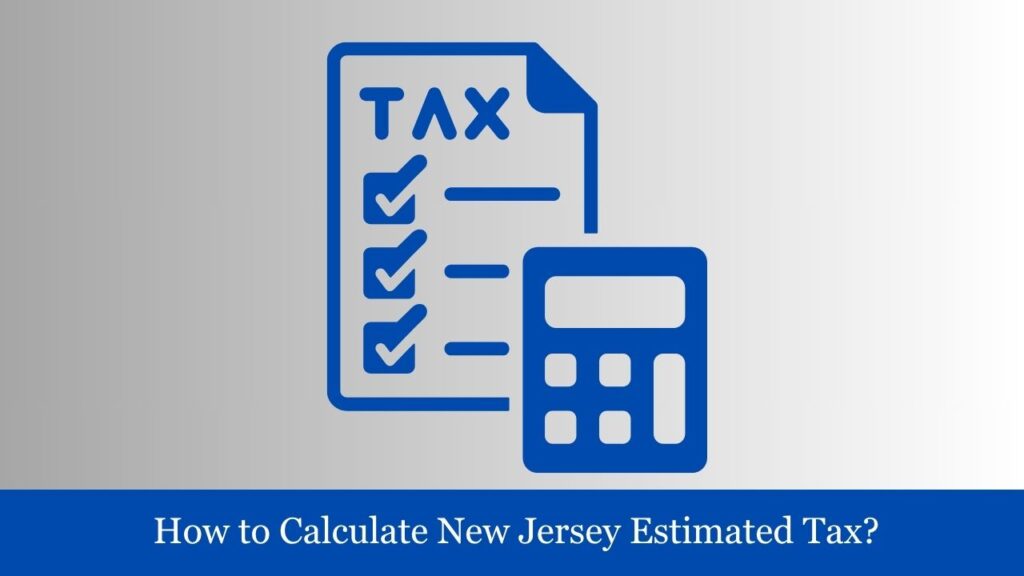
Accurately calculating your New Jersey estimated tax payments is essential to avoid penalties, manage cash flow, and remain compliant with state tax laws. Whether you’re a freelancer, investor, landlord, or a business entity operating in the state, New Jersey requires that you estimate your annual tax liability and pay it in four quarterly installments if you expect to owe more than a threshold amount.
This guide breaks down the calculation process step-by-step for individual taxpayers, corporations, and pass-through entities, while highlighting safe harbor rules and helpful tips.
1. Estimated Tax Calculation for Individuals (Form NJ-1040-ES)
Who Needs to Calculate?
You are required to figure and pay estimated taxes if any portion of your income is not subject to adequate withholding :
- You’re a New Jersey resident or part-year resident,
- You anticipate a tax liability exceeding $400 after subtracting withholding and available credits.,
- You receive income not subject to employer withholding.
Step-by-Step: How to Calculate
- Estimate Your Total Gross Income
Include all taxable sources:- Wages, self-employment income, rental income
- Capital gains, dividends, interest
- Alimony received, retirement distributions
- Income from partnerships or S corps
- Subtract Deductions and Exemptions
- Follow New Jersey’s standard deduction guidelines, as the state does not permit the use of federal itemized deductions.
- Deduct contributions to NJ-approved retirement plans, health savings accounts, etc.
- Apply New Jersey Income Tax Rates
Use the state’s graduated tax brackets (for TY 2025):
| Taxable Income (Single) | Tax Rate |
| Up to $20,000 | 1.4%–1.75% |
| $20,001–$75,000 | 2.45%–5.525% |
| $75,001–$500,000 | 6.37%–6.97% |
| Over $500,000 | 8.97% |
- Subtract Any Credits or Withholdings
- Include credits for property taxes, NJ Earned Income Tax Credit (EITC), child and dependent care, etc.
- Deduct NJ tax withheld from W-2s, 1099s, or other sources.
- Determine Estimated Tax Due
- If your outstanding tax due exceeds $400, you’re required to make estimated quarterly payments.
- Divide your estimated total tax due by 4 and submit that amount each quarter.
Example for an Individual
- Estimated total income: $85,000
- Estimated NJ tax: $4,000
- NJ withholding: $500
- Net estimated liability: $3,500
Pay $875 quarterly using Form NJ-1040-ES.
2. Estimated Tax Calculation for Corporations (Form CBT-150)
Who Must Calculate?
C corporations must make estimated payments if:
- Their expected Corporation Business Tax (CBT) liability exceeds $500.
Step-by-Step: Corporate Calculation Process
- Calculate Entire Net Income (ENI)
Calculated using your federal taxable income, with adjustments for New Jersey-specific additions and deductions - Apportion Income to NJ
Apply the NJ apportionment formula (usually based on sales within NJ). - Apply CBT Tax Rates
As of 2025:- 0% on ENI ≤ $100,000
- 7.5% on ENI between $100,001–$1,000,000
- 9% on ENI over $1,000,000
- Apply Credits or Overpayments
Deduct carryforwards or prior year overpayments. - Determine Estimated Tax Due
- Divide your estimated CBT liability by 4 for quarterly payments.
- Use Form CBT-150 to submit.
3. Estimated Tax for Pass-Through Entities (Form PTE-150)
When Required
- If the business elects the Pass-Through Business Alternative Income Tax (BAIT), it must estimate and pay taxes at the entity level on behalf of its owners.
Step-by-Step
- Determine Taxable BAIT Income
- Start with NJ-sourced income allocated to partners/shareholders/members.
- Adjust for exclusions and NJ-specific modifications.
- Apply BAIT Rates (TY 2025 example):
- 5.675% on income ≤ $250,000
- 6.52% on $250,001–$1 million
- 9.12% on $1M–$3M
- 10.9% on income > $3 million
- Divide Total Estimated Tax by 4
- Use Form PTE-150 for quarterly payments.
4. Safe Harbor Rule (Individuals Only)
You can avoid underpayment penalties if you pay the lesser of:
- 90% of your current year’s total tax, or
- 100% of your prior year’s total tax (if it covered a full 12 months).
Tip: This is especially useful if your income fluctuates or is unpredictable.
Estimated Tax Due Dates (All Taxpayers)
| Quarter | Period Covered | Due Date |
| Q1 | Jan 1 – Mar 31 | April 15 |
| Q2 | Apr 1 – May 31 | June 15 |
| Q3 | Jun 1 – Aug 31 | September 15 |
| Q4 | Sep 1 – Dec 31 | January 15 (next year) |
Summary: Key Considerations for Accurate Estimation
| Category | Best Practice |
| Income Projection | Use prior year data + adjustments for changes |
| Withholding Review | Compare total expected withholding to projected liability |
| Credit Estimation | Apply property tax, EITC, and BAIT credits accurately |
| Entity Classification | Check if CBT or PTE rules apply |
| Quarterly Adjustments | Recalculate if income increases or decreases mid-year |
How to Make NJ Estimated Tax Payments
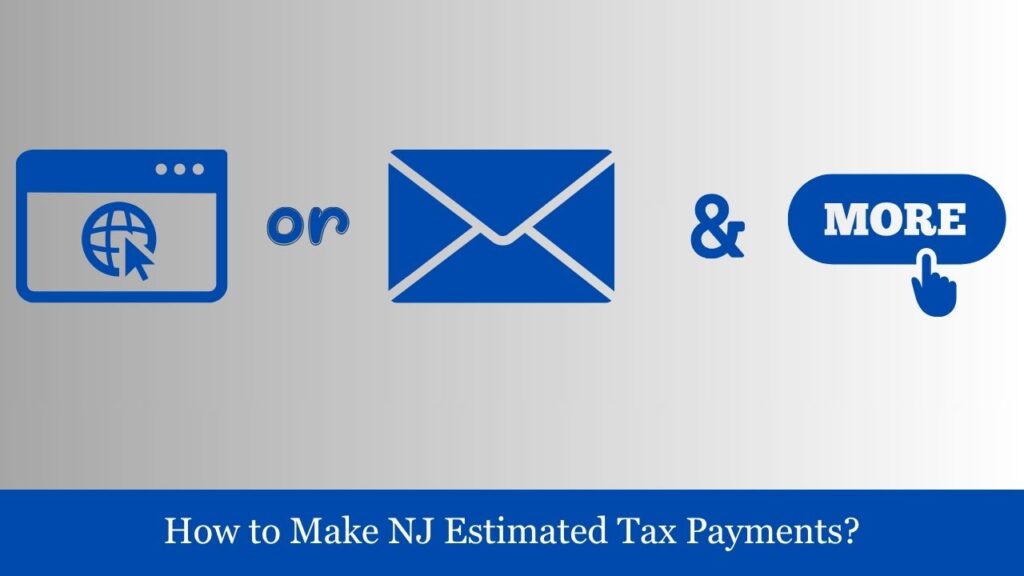
New Jersey offers several user-friendly options for individuals to make their quarterly estimated tax payments. These options are designed to suit different preferences—from modern, secure digital methods to traditional paper-based submissions. It’s crucial for individuals expecting to owe more than $400 in income tax (after withholdings and credits) to make these payments on time to avoid penalties and interest. Below are the available methods explained in detail:
1. Online Payment via New Jersey e-Services Portal
The most convenient and widely recommended method for submitting estimated tax payments is through the New Jersey Division of Taxation’s e-Services portal. This online platform allows individuals to log in securely using their Social Security Number (SSN) and date of birth. Once authenticated, taxpayers can select the option to make an estimated payment and proceed by entering the applicable tax year and quarterly payment amount.
The system allows payment through direct bank debit (ACH) at no additional cost or by credit/debit card, which includes a processing fee handled by a third-party provider. After the transaction is completed, taxpayers receive a digital confirmation receipt, which can be printed or saved for recordkeeping. This method ensures immediate processing and is ideal for taxpayers seeking speed, convenience, and real-time confirmation.
2. Payment by Mail Using Form NJ-1040-ES Vouchers
For those who prefer or require a paper-based payment method, the State of New Jersey continues to accept estimated tax payments through the mail. Individuals must use the official Form NJ-1040-ES payment vouchers, which are issued by the Division of Taxation and are specific to each tax quarter.
The taxpayer must fill out the voucher with their name, SSN, and payment amount, and then mail it along with a check or money order made payable to “State of New Jersey – TGI”. It’s important to include identifying information—such as the tax year and “Estimated Tax Payment” notation—on the check’s memo line to ensure proper application. This method requires more lead time due to postal delivery and manual processing, so early submission is recommended to meet quarterly deadlines and avoid penalties.
3. Payment Through Third-Party Tax Software
Many popular tax preparation software platforms—such as TurboTax, TaxAct, and H&R Block—offer integrated state estimated tax payment features during both the initial tax return preparation and as a standalone tool. These platforms often allow users to calculate and schedule New Jersey estimated payments for one or more quarters at a time.
Payments can usually be submitted via linked bank accounts or cards, and receipts are generated within the software interface. This method is especially useful for individuals who already use such software for federal tax filing or who prefer to handle all tax-related tasks in one place.
4. Scheduling Recurring Payments for Future Quarters
Another helpful feature offered through the New Jersey e-Services portal and some third-party platforms is the ability to schedule future-dated or recurring estimated tax payments. This is especially useful for taxpayers with stable quarterly income—such as retirees with pension income, freelancers with consistent contracts, or landlords receiving regular rental income.
By setting up recurring payments in advance, taxpayers can avoid missed due dates, automate compliance, and minimize the administrative burden throughout the year. Payment schedules can be modified or canceled as needed if income changes significantly during the tax year.
Penalties for Underpayment or Late Payment
In New Jersey, taxpayers who fail to make sufficient or timely estimated tax payments may be subject to penalties and interest. Individuals must make quarterly payments if they expect to owe more than $400 in tax for the year after credits and withholding. If these payments are underpaid or late, penalties are assessed based on the amount owed, the duration of the delay, and the prevailing interest rate—calculated using Form NJ-2210.
Corporations and pass-through entities that miss estimated payments or underpay their Corporation Business Tax (CBT) or Pass-Through Business Alternative Income Tax (BAIT) face similar penalties, including a 5% monthly late payment penalty up to 25%, plus interest.
Additionally, failing to file final returns on time can trigger late filing penalties and additional fees. To avoid penalties, taxpayers can rely on safe harbour rules (paying 100% of last year’s tax or 90% of the current year’s), adjust payments if income changes, and ensure all returns and payments are submitted by quarterly deadlines.
Conclusion
Making accurate and timely New Jersey estimated tax payments is crucial for avoiding penalties, managing cash flow, and staying compliant with state tax laws. Whether you’re an individual earning non-wage income or a business with state tax obligations, estimating quarterly taxes based on reliable income projections and using the safe harbor provisions can ensure smooth year-end filing. Always track deadlines, use the appropriate forms, and adjust estimates as your income changes throughout the year.
Frequently Asked Questions (FAQs)
Who needs to pay estimated taxes in New Jersey?
Individuals expecting to owe over $400 in state income tax after accounting for withholding and credits are required to make estimated tax.
Which form should individuals use to submit estimated tax payments?
Use Form NJ-1040-ES for individual estimated payments.
Are there penalties for underpayment?
Yes, New Jersey imposes interest and penalties on underpaid or late estimated payments, calculated per quarter.
Can I avoid penalties if I miscalculate?
You may avoid penalties by paying at least 100% of your previous year’s tax or 90% of your current year’s liability—the “safe harbor” rule.
Do corporations and partnerships have different rules?
Yes. Corporations use Form CBT-150, while partnerships and S corps electing BAIT use Form PTE-150 for quarterly payments.
Can I pay online?
Yes, estimated payments can be made online via the New Jersey Division of Taxation’s e-Services portal.
